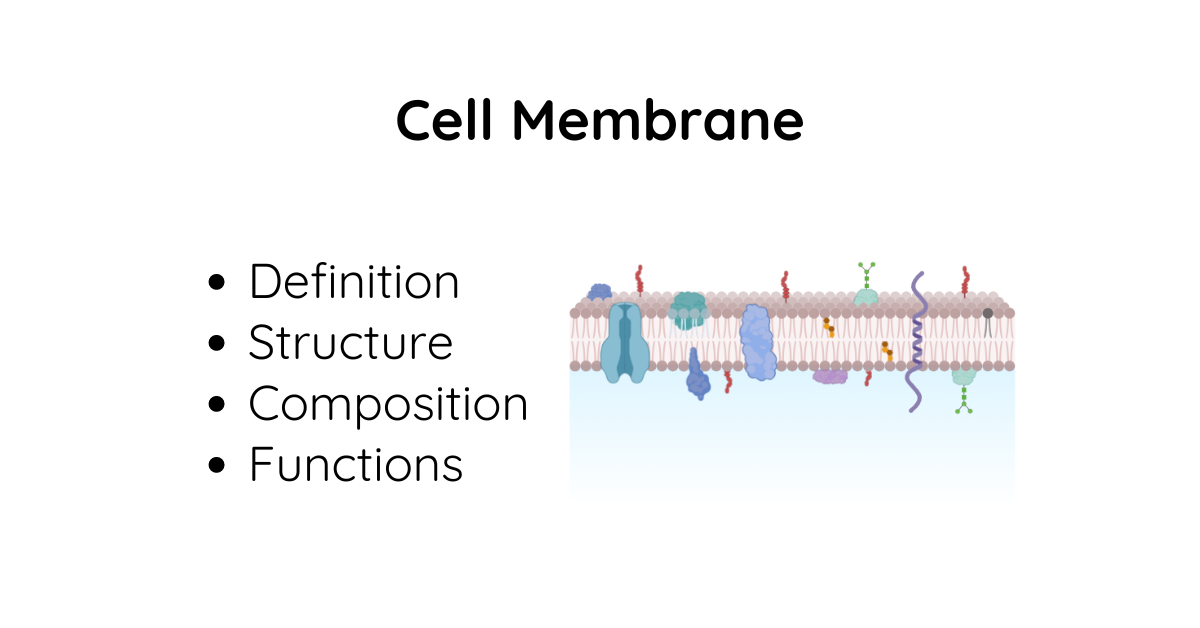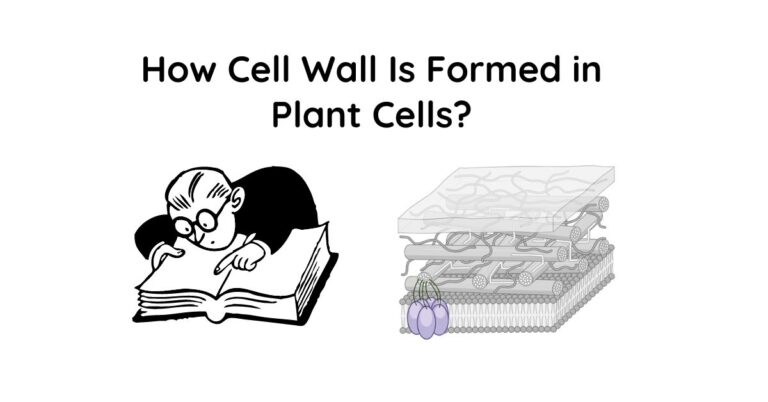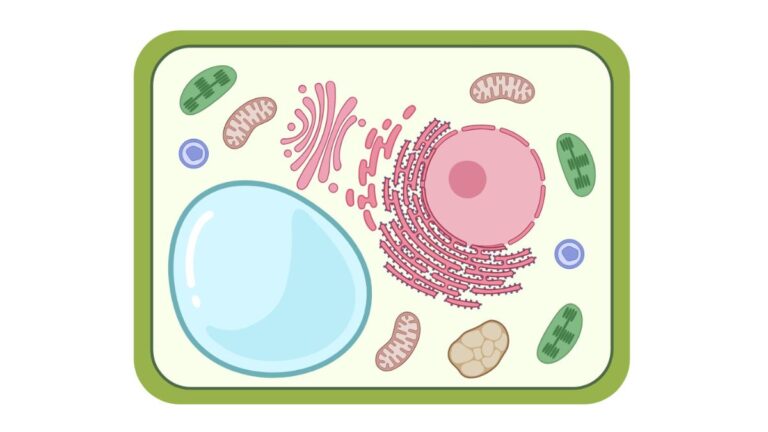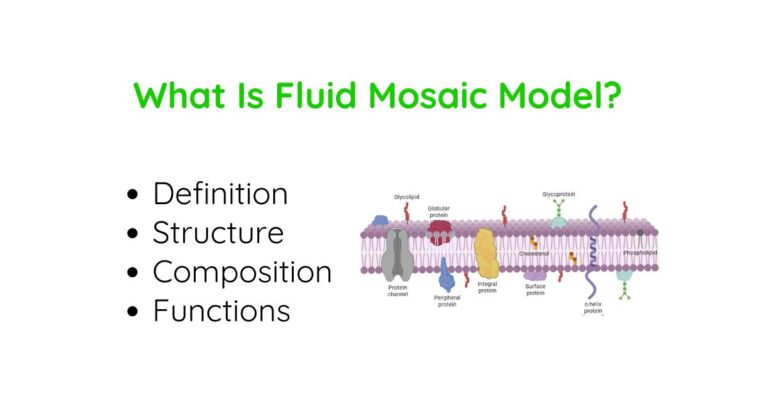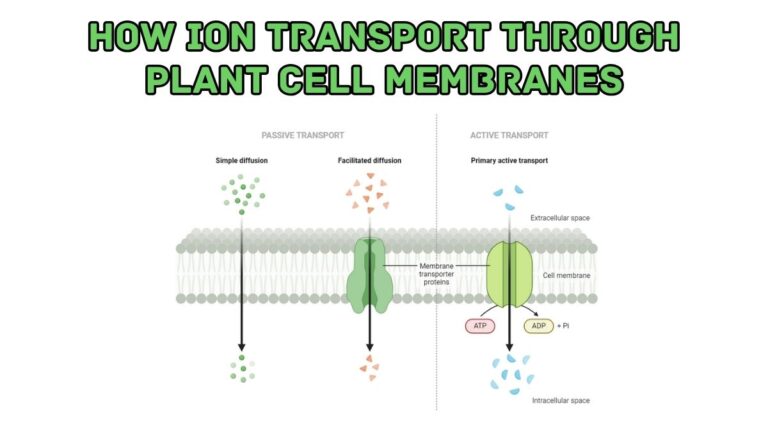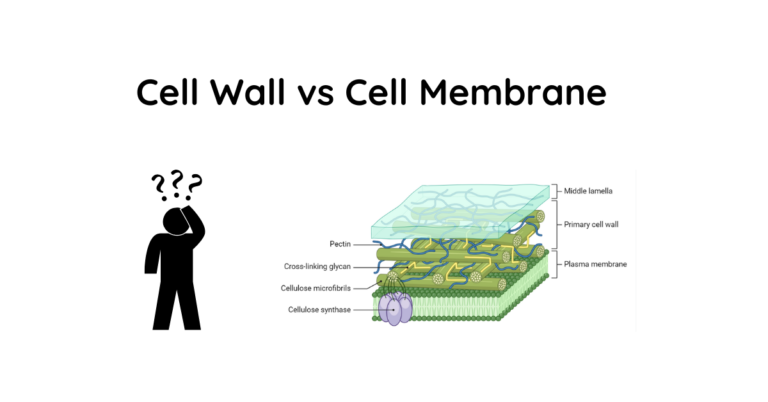Cell Membrane (Plasma Membrane): Definition, Structure, Composition and Functions
What Is Cell Membrane?
The cell membrane, also known as the plasma membrane, is a thin, semi-permeable barrier that surrounds and encloses the contents of a cell. It separates the interior of the cell from the external environment, protecting the cell and regulating the movement of substances in and out of the cell.
Cell Membrane Definition
The cell membrane is a biological membrane that defines the boundaries of a cell and acts as a selective barrier, allowing certain substances to pass through while blocking others. It is an essential component of all living cells, both prokaryotic (bacteria) and eukaryotic (plants, animals, fungi, and protists).
Why Is It Called Plasma Membrane?
The term “plasma membrane” is derived from the Greek word “plasma,” which means “something formed or molded.”
This name reflects the fact that the membrane is a fluid, dynamic structure that can change shape and adapt to various cellular processes.
Is Cell Membrane And Plasma Membrane Same?
Yes, the cell membrane and plasma membrane are the same structure. The term “cell membrane” is often used interchangeably with “plasma membrane” to refer to the outermost membrane that surrounds and encloses the contents of a cell.
Cell Membrane Structure
The cell membrane has a fluid mosaic structure, which means it is composed of various molecules that are arranged in a fluid, mosaic-like pattern.
The primary components of the cell membrane are:
- Phospholipids: These lipid molecules form a lipid bilayer, with their hydrophilic (water-loving) heads facing outwards and their hydrophobic (water-repelling) tails facing inwards.
- Proteins: There are several proteins in the lipid bilayer of cell membrane, including:
- Integral membrane proteins: These proteins span the entire membrane and are involved in various functions, such as transport, signaling, and enzymatic activities.
- Peripheral membrane proteins: These proteins are loosely attached to the surface of the membrane and are involved in various cellular processes.
- Carbohydrates: Some proteins and lipids in the membrane have carbohydrate chains attached to them, forming glycoproteins and glycolipids, respectively. These carbohydrates play roles in cell recognition and communication.
- Cholesterol: This lipid molecule is found in the membranes of animal cells and helps maintain membrane fluidity and permeability.
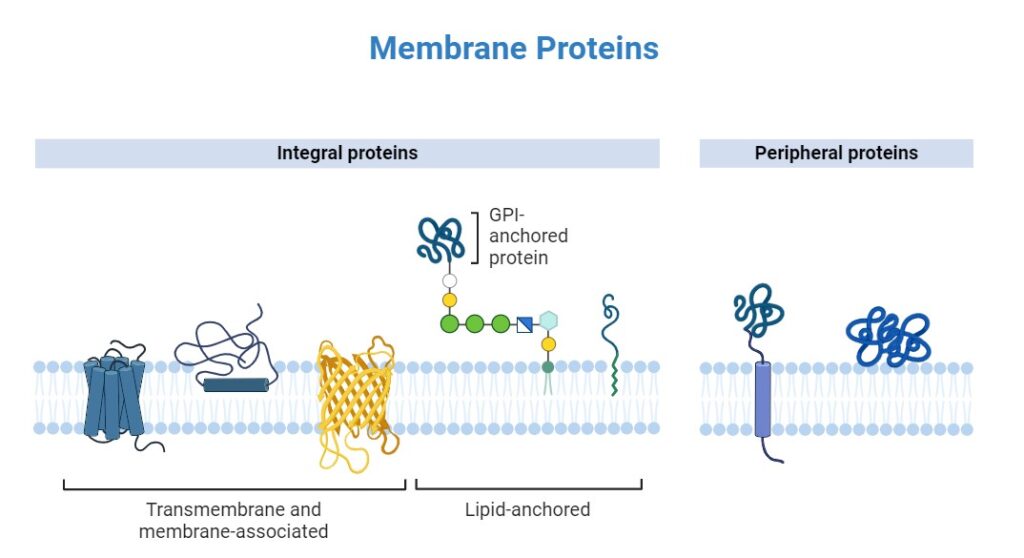
Cell Membrane Diagram
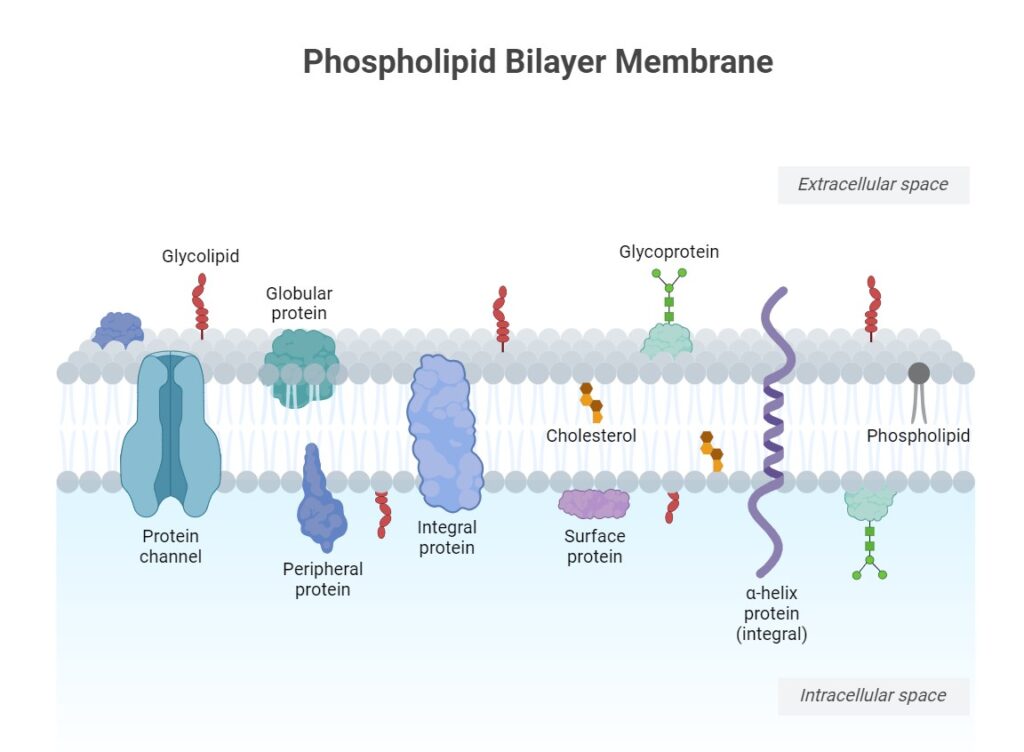
Cell Membrane Composition
The cell membrane is primarily composed of the following:
- Phospholipids (40-50% by weight)
- Proteins (50-60% by weight)
- Cholesterol (in animal cells)
- Carbohydrates (attached to proteins and lipids)
Cell Membrane Functions
The cell membrane performs several crucial functions, some of the major roles are discussed in below:
Selective Permeability
Cell membrane regulates the movement of substances in and out of the cell, allowing some molecules to pass through while blocking others.
This is essential for maintaining the cell’s internal environment and controlling the exchange of materials with the external environment.
Compartmentalization
The cell membrane separates the cell’s internal components from the outer conditions, creating a distinct compartment for cellular processes to occur.
Cell Recognition and Communication
Proteins and carbohydrates on the cell membrane surface act as markers for cell recognition and facilitate communication between cells.
Enzymatic Activity
Some membrane proteins function as enzymes, catalyzing specific chemical reactions.
Cell Signaling
Receptor proteins in the cell membrane receive and transmit signals from the external environment, allowing the cell to respond to various stimuli.
Structural Support
The cell membrane provides structural support and shape to the cell, and it is anchored to the cytoskeleton, which helps maintain the cell’s shape.
What Are The 4 Main Components Of The Cell Membrane?
The four main components of the cell membrane are:
- Phospholipids
- Proteins
- Cholesterol
- Carbohydrates
What Are 4 Facts About The Cell Membrane?
- The cell membrane is a semipermeable barrier that separates the cell’s interior from the outside environment.
- It is composed primarily of a phospholipid bilayer, with embedded proteins and other molecules.
- The membrane is fluid and dynamic, with components that can move laterally within the plane of the membrane.
- It plays a crucial role in regulating what enters and exits the cell, as well as in cell signaling and recognition.
What Is The Difference Between The Cell Wall And The Cell Membrane?
The main differences between the cell wall and the cell membrane are:
| Feature | Cell Wall | Cell Membrane |
| Presence | Found in plant cells, fungi, and some bacteria | Found in all cells (prokaryotic and eukaryotic) |
| Composition | Made of cellulose, chitin, or peptidoglycan | Made of phospholipids, proteins, and cholesterol (in animal cells) |
| Structure | Rigid and non-living | Fluid and semi-permeable |
| Function | Provides structural support and protection | Regulates the movement of substances in and out of the cell |
What Is The Difference Between The Cell Membrane And The Plasma Membrane?
There is no difference between the cell membrane and the plasma membrane. They are the same structure, referring to the outermost membrane that surrounds and encloses the contents of a cell.
The term “cell membrane” is often used interchangeably with “plasma membrane” to describe this essential component of all living cells.
Why Is The Plasma Membrane Called A Fluid Mosaic?
The plasma membrane is called a fluid mosaic because of its dynamic nature and diverse composition. The phospholipids and proteins in the membrane are not fixed in place but can move laterally within the plane of the membrane, like tiles in a mosaic.. This fluidity allows the membrane to be flexible and adaptable.
What Will Have The Most Difficulty Passing Through The Plasma Membrane?
Large, polar molecules such as proteins and polysaccharides have the most difficulty passing through the plasma membrane. The hydrophobic core of the phospholipid bilayer acts as a barrier to these molecules.
What 3 Molecules Cannot Easily Pass Through The Plasma Membrane?
Three molecules that cannot easily pass through the plasma membrane are:
- Proteins: Proteins are large, polar molecules that cannot diffuse through the hydrophobic interior of the plasma membrane’s lipid bilayer.
- Nucleic Acids (DNA and RNA): Like proteins, nucleic acids are large, polar molecules that cannot pass through the plasma membrane without the assistance of specialized transport mechanisms.
- Ions (charged particles): Ions, such as sodium (Na+), potassium (K+), and chloride (Cl-), are charged particles that cannot easily diffuse through the hydrophobic interior of the plasma membrane’s lipid bilayer.
These molecules require the help of specific transport proteins or carrier proteins embedded in the plasma membrane to facilitate their movement across the membrane.
Alternatively, they may enter or exit the cell through processes like endocytosis or exocytosis, which involve the formation of membrane-bound vesicles.
Why Does Water Not Dissolve The Cell Membrane?
Water does not dissolve the cell membrane because of the unique structure and properties of the membrane’s lipid bilayer.
The lipid bilayer is composed of phospholipid molecules, which have a hydrophilic (water-loving) head and two hydrophobic (water-repelling) fatty acid tails. The hydrophobic tails are arranged in the interior of the bilayer, facing each other, while the hydrophilic heads face outwards, towards the aqueous environments inside and outside the cell.
This arrangement creates a barrier that is impermeable to water molecules. The hydrophobic interior of the lipid bilayer repels water molecules, preventing them from dissolving or disrupting the membrane structure.
Additionally, the phospholipids in the bilayer are held together by non-covalent interactions, such as van der Waals forces and hydrophobic interactions, which further stabilize the membrane and prevent it from being dissolved by water.
It is important to note that while the lipid bilayer is impermeable to water, water molecules can still pass through the membrane via specialized transport proteins called aquaporins, which facilitate the controlled movement of water across the membrane.
Is Lipid Bilayer Same As Plasma Membrane?
The lipid bilayer is a key component of the plasma membrane, but it is not the same as the entire plasma membrane. The plasma membrane consists of the phospholipid bilayer plus embedded proteins, cholesterol, and attached carbohydrates.
Can A Cell Exist Without A Cell Membrane?
No, a cell cannot exist without a cell membrane. The membrane is essential for maintaining the cell’s integrity, regulating what enters and exits the cell, and facilitating communication with other cells.
Do All Cells Have A Cell Membrane?
Yes, all living cells have a cell membrane. This includes prokaryotic cells (bacteria and archaea) and eukaryotic cells (plants, animals, fungi, and protists).
What Does The Cell Membrane Do In A Plant Cell?
In plant cells, the cell membrane serves the same basic functions as in animal cells, such as protection, selective permeability, and cell signaling. Plant cells also have a cell wall outside the cell membrane, which provides additional structural support and protection.
Learn more: Plant cell
Do Plants Have Cholesterol In Their Membranes?
Plant cells do not have cholesterol in their membrane]. Instead, they contain other types of sterols, such as sitosterol and stigmasterol, which serve similar functions in regulating membrane fluidity and permeability.
Why Can’t Hydrophilic Molecules Cross The Membrane?
Hydrophilic molecules cannot easily cross the cell membrane because they are repelled by the hydrophobic core of the phospholipid bilayer. To enter or exit the cell, these molecules require the assistance of specific transport proteins embedded in the membrane.
What Would Happen If A Cell Membrane Is Damaged?
If a cell membrane is damaged, the cell may lose its ability to regulate what enters and exits the cell. This can lead to an imbalance in the cell’s internal environment, disrupting normal cellular functions. In severe cases, membrane damage can result in cell death.
What Will Happen If The Cell Has No Plasma Membrane?
Without a plasma membrane, a cell would be unable to maintain its internal environment and would quickly die. The cell would be exposed to harmful substances and would lose essential molecules and ions. The plasma membrane is crucial for the survival and proper functioning of all cells.
What Will Happen If The Plasma Membrane Does Not Function Properly?
If the plasma membrane does not function properly, the cell may experience:
- Unregulated entry and exit of molecules and ions
- Disruption of cell signaling and communication
- Loss of structural integrity
- Impaired cellular processes (e.g., metabolism, waste removal)
These issues can lead to cellular dysfunction and, in severe cases, cell deat.
FAQs
Which Cells Have No Cell Membrane?
All living cells have a cell membrane. However, some viruses, which are not considered living organisms, lack a cell membrane.
What Two Things Make Up The Cell Membrane?
The two main components that make up the cell membrane are phospholipids and proteins.
Do Plants Need A Cell Membrane?
Yes, plant cells require a cell membrane to maintain their internal environment, regulate selective permeability, and facilitate cell signaling.
What Attracts Water In The Cell Membrane?
The hydrophilic heads of the phospholipids in the cell membrane attract water. These heads contain phosphate groups that are polar and interact favorably with water molecules.
In conclusion, the cell membrane is a vital component of all living cells, serving as a protective barrier, regulating selective permeability, and facilitating cell signaling and communication.
Cell membrane fluid mosaic structure, composed primarily of phospholipids and proteins, allows it to be dynamic and adaptable while maintaining the cell’s internal environment.
Understanding the structure and functions of the cell membrane is essential for grasping the fundamental processes of life at the cellular level.

